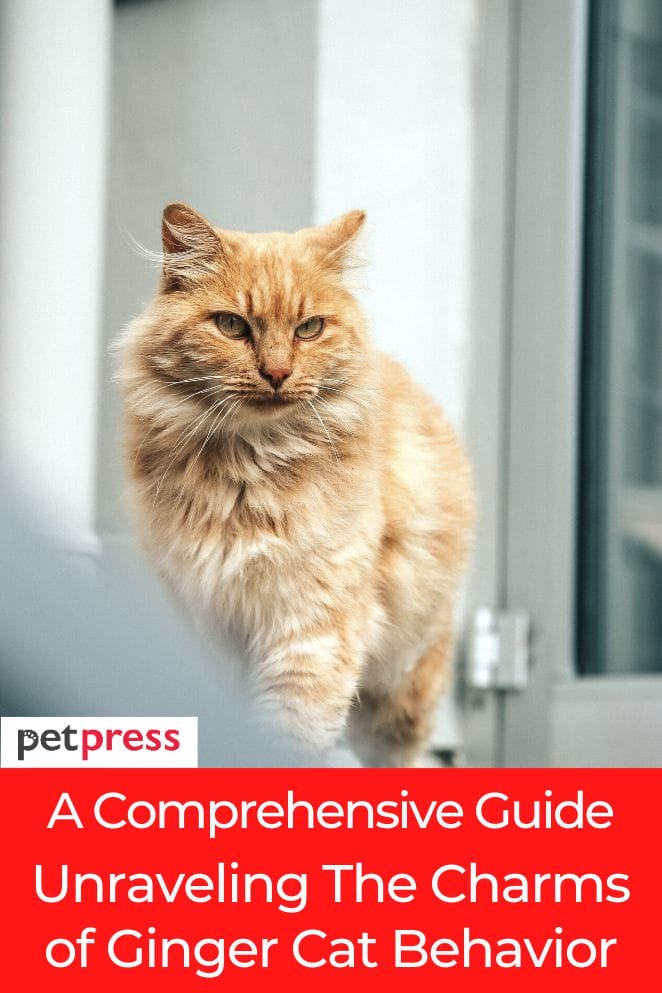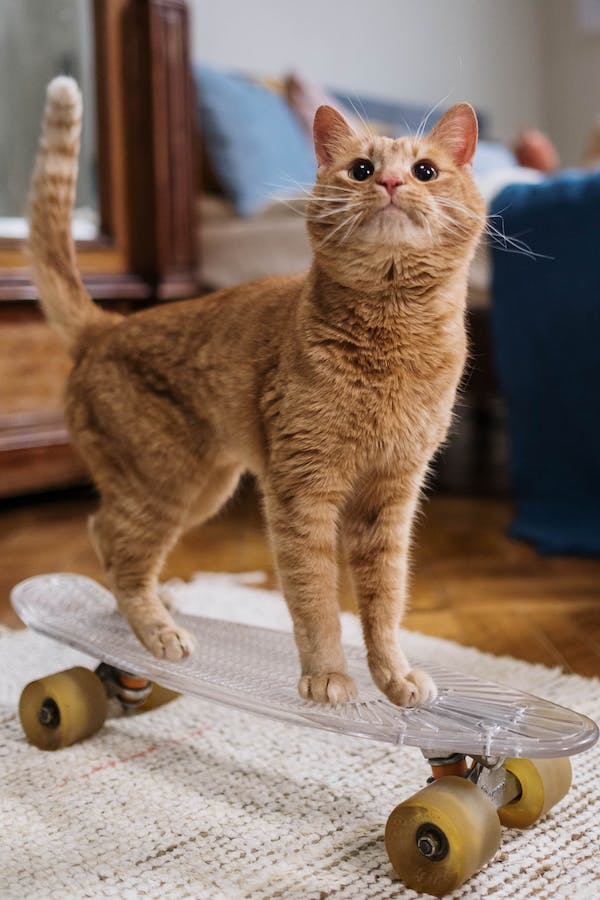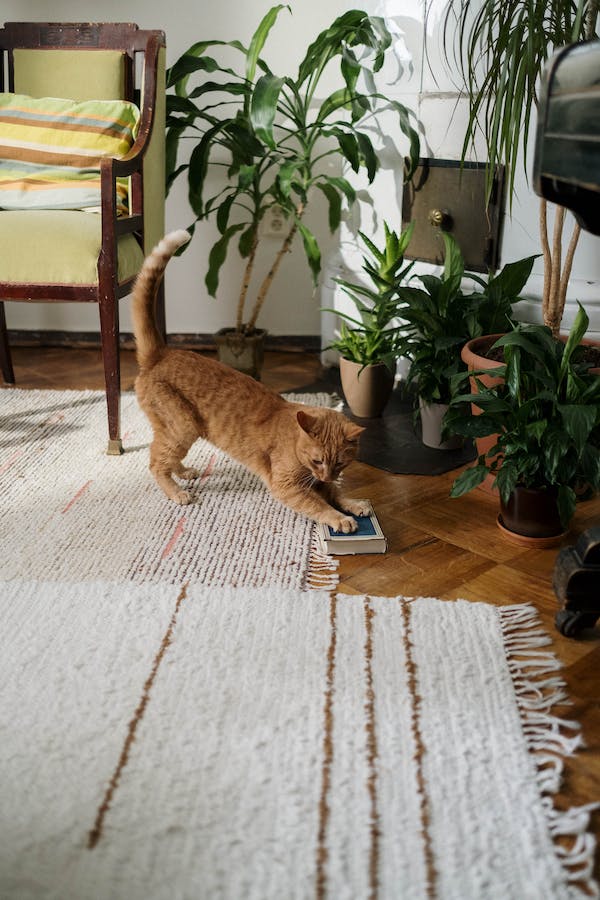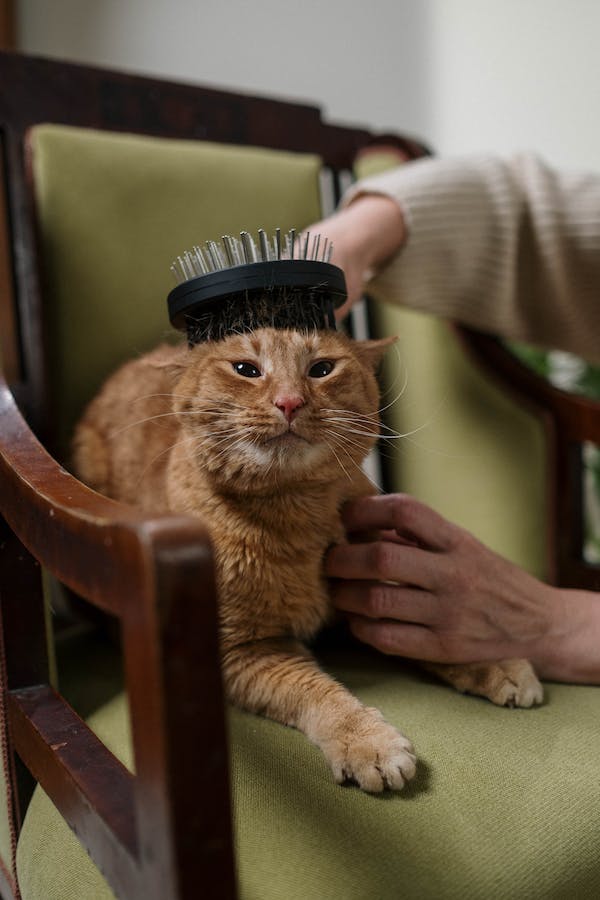
Ginger cats, with their vibrant coats and playful personalities, have a special place in the hearts of cat lovers worldwide.
If you’re a proud owner of a ginger feline friend or considering adopting one, understanding their unique behaviors is key to nurturing a strong bond.
In this guide, we’ll delve into the fascinating world of ginger cat behavior, addressing common traits, and potential issues, and offering valuable tips for strengthening the human-feline connection.
Common Ginger Cat Behaviors

Ginger cats, also known as orange or marmalade cats, often exhibit distinct behaviors that set them apart from other feline companions.
Spirited and outgoing nature
Ginger cats, often referred to as orange or marmalade cats, are known for their lively and outgoing personalities.
These feline companions tend to be more social than their counterparts, displaying a penchant for seeking attention and interaction with their human caregivers.
If you observe your ginger cat following you around the house or curling up on your lap, interpret it as a clear expression of their affectionate and sociable demeanor.
Playful energy
One distinctive trait of ginger cats is their playful energy.
These felines thrive on interactive games, toys that stimulate their hunting instincts, and engaging activities that keep them mentally sharp.
Creating an environment that encourages play is key to satisfying their curious and energetic nature.
Providing a variety of toys and spending quality playtime with your ginger cat can contribute significantly to their well-being and happiness.
Independent streak
Despite their social tendencies, ginger cats may also exhibit a strong independent streak.
While they thoroughly enjoy companionship, they equally value their personal space.
It’s essential to respect their need for solo time, as doing so fosters a healthy balance between socializing and solitary moments.
Providing cozy spots or quiet corners where your ginger cat can retreat when seeking some alone time ensures a harmonious relationship between their sociable nature and independent instincts.
Affectionate behavior
Ginger cats are known to be particularly affectionate.
They often express their love through physical closeness, whether it’s by nuzzling against you, purring loudly, or sitting on your lap.
Recognizing and reciprocating their affectionate gestures can strengthen the bond between you and your ginger cat.
Communication through vocalizations
Like many other cats, ginger cats may communicate through vocalizations.
Pay attention to their meows, purrs, and chirps, as these sounds can convey a range of emotions and needs.
Understanding their vocal cues can enhance your ability to respond appropriately to their desires, whether it be for food, attention, or simply companionship.
Common Ginger Cat Behavior Issues

While ginger cats are generally easygoing, there are a few behavior issues that might crop up.
Excessive vocalization
While ginger cats are generally easygoing, some individuals may develop a habit of excessive vocalization.
This behavior, characterized by frequent meows, chirps, and purrs, can be endearing initially but may become bothersome if it reaches an extreme level.
Identifying the root cause of their vocalizations is crucial.
- Addressing hunger: Sometimes, increased vocalization may be a plea for more food or a sign of dissatisfaction with their current diet.
- Alleviating boredom: Mental stimulation can be as important as physical activity for ginger cats, helping to reduce excessive vocalization.
- Providing attention: Regular social engagement can alleviate the need for excessive vocalization as a means of seeking companionship.
Territorial behavior
Ginger cats, like many felines, may exhibit territorial behavior, particularly in multi-pet households. This behavior often manifests through spraying or scratching to mark their territory.
- Scratching posts and pads: Offer a variety of scratching posts and pads to satisfy your ginger cat’s natural urge to scratch.
- Positive reinforcement: Positive reinforcement helps reinforce the desired behavior and encourages them to choose appropriate locations for territorial marking.
- Environmental enrichment: Providing a diverse and engaging living space can reduce the likelihood of territorial behavior by promoting mental and physical well-being.
Tips for Bonding with Your Ginger Cat

Building a strong bond with your ginger cat involves patience, understanding, and a dash of playfulness.
Here are some tips to strengthen the connection between you and your feline friend:
Interactive play
Interactive play is a crucial aspect of keeping your ginger cat mentally stimulated and physically active.
Choose toys that tap into their hunting instincts, such as feather wands, laser pointers, or toys that mimic the movement of small prey.
These play sessions not only provide exercise but also strengthen the bond between you and your cat.
Gentle affection
Pay attention to your cat’s cues – some may enjoy long strokes, while others prefer a lighter touch.
It’s important to respect their boundaries and personal space.
If your cat indicates they’ve had enough, allow them to retreat without feeling pressured.
Consistent and gentle affection builds trust and reinforces the positive connection between you and your feline friend.
Treat time
Positive reinforcement is a powerful tool in cat training, and treats can be a delightful reward for good behavior.
When your ginger cat exhibits desirable actions, such as using a scratching post or following a command, offer a small treat to create a positive association.
Choose treats that are appropriate for their diet and provide them in moderation.
Comfortable spaces
Ensure there are cozy and comfortable spots throughout your home – perhaps a soft cat bed, a window perch with a view, or a quiet corner.
These spaces give your ginger cat the option to unwind and have some alone time when needed.
Respecting their need for solitude contributes to a balanced and contented feline companion.
Regular grooming
Grooming sessions are not only beneficial for keeping your ginger cat’s coat in top condition but also serve as a bonding activity.
Brushing removes loose fur, preventing hairballs and matting.
Start grooming sessions gradually, allowing your cat to acclimate to the sensation of being brushed.
Use a cat-friendly brush and be mindful of their comfort level.
Conclusion
Ginger cats bring warmth, charm, and a dash of mischief into our lives.
Understanding and embracing their unique behaviors is essential for a harmonious and fulfilling relationship.
By appreciating their social nature, addressing potential behavior issues with patience, and actively bonding through play and affection, you’ll ensure that your ginger cat remains a beloved and cherished member of your family.
FAQs
While coat color doesn’t directly correlate with health, it’s essential to maintain regular veterinary check-ups for all cats, including gingers. Some studies suggest a potential link between coat color and temperament, but individual variations abound.
Provide ample scratching posts, use positive reinforcement, and consider using pheromone diffusers to create a calming environment. If the behavior persists, consult with a veterinarian or a professional animal behaviorist.
Each cat is unique, but ginger cats generally adapt well to other pets, especially if introduced gradually. Supervised interactions and positive reinforcement can help foster good relationships between animals in your household.


GIPHY App Key not set. Please check settings